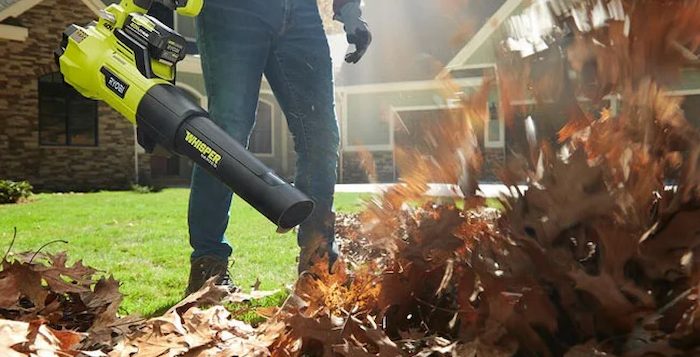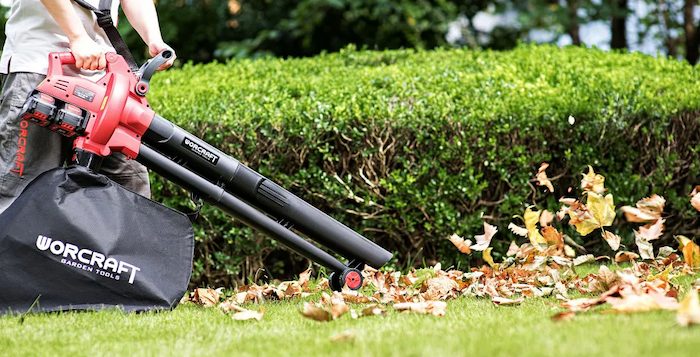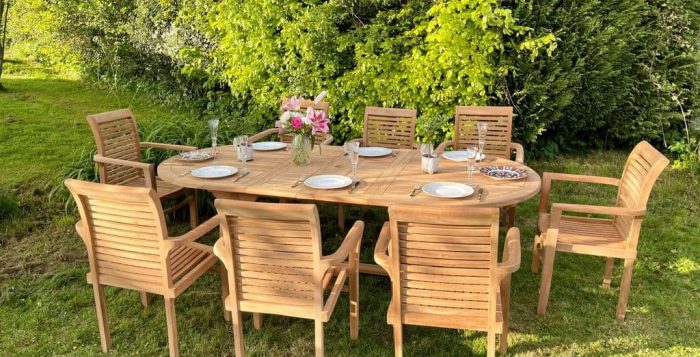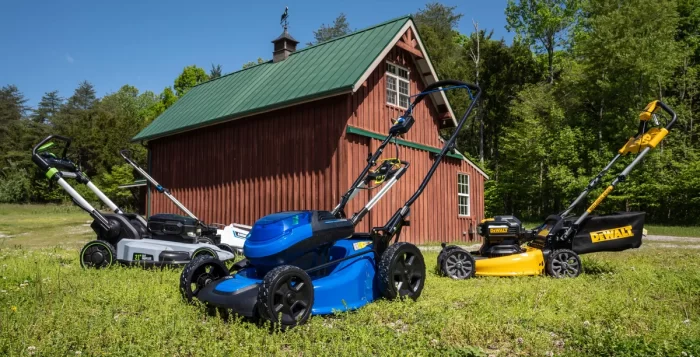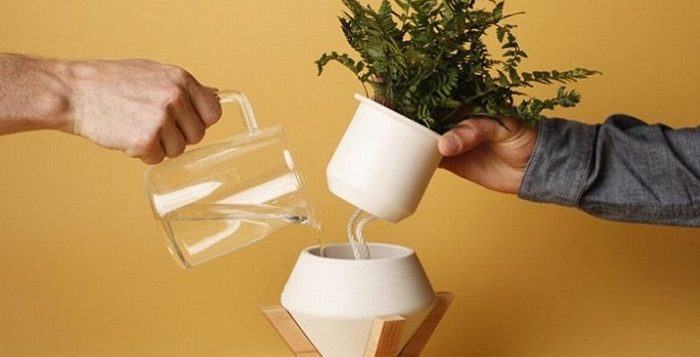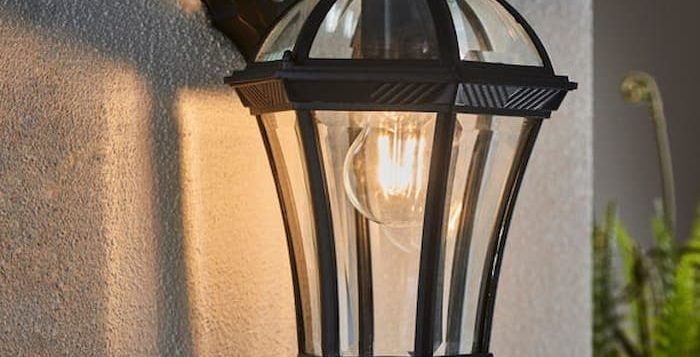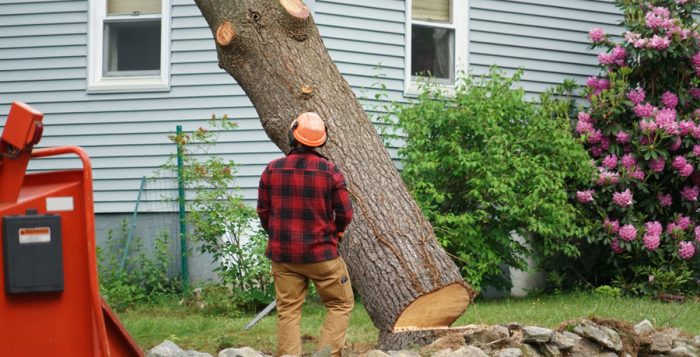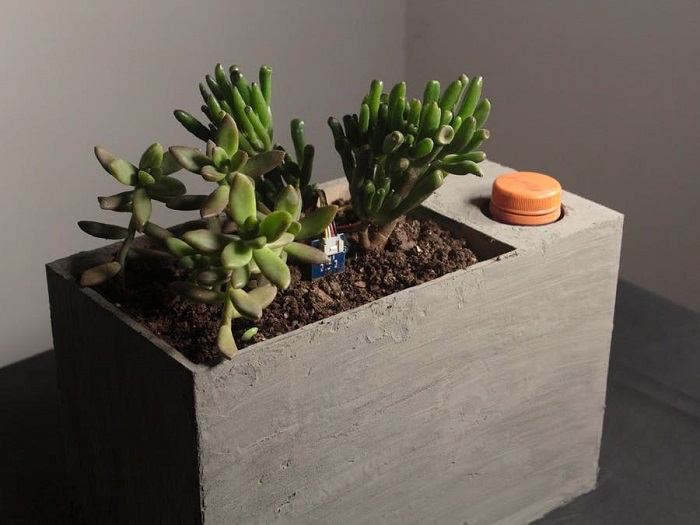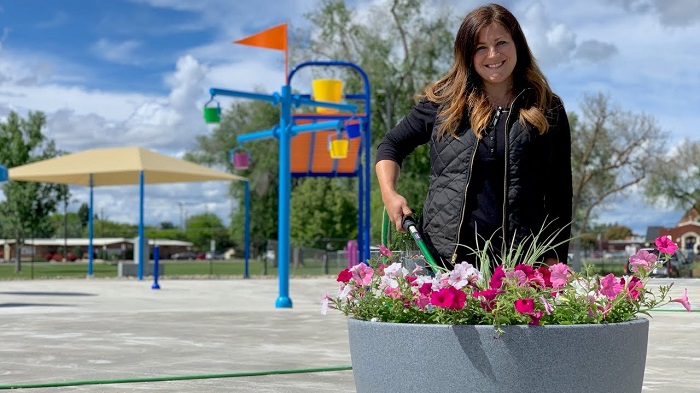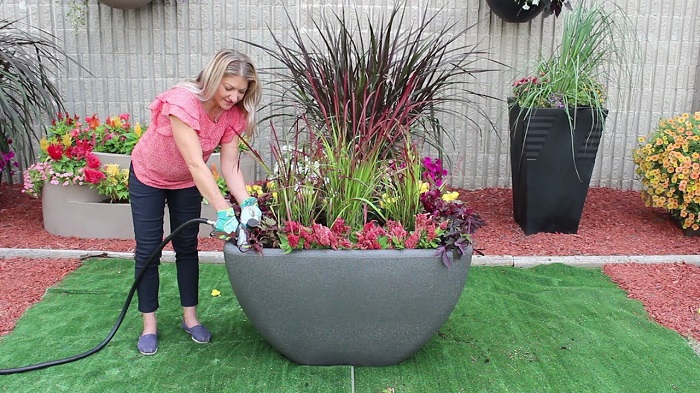Imagine unwinding in your private oasis, a cosy hot tub that fits just the right number of people – four. Four-person spas provide a comfortable yet spacious experience for families, couples, or a small group of friends. They’re also an excellent choice for those with space constraints, offering luxury without the need for a large area.
Garden
The Complete Guide to Cordless Leaf Blowers
Those of us that relish in having an organised garden and take pride in the amount of work we put into the upkeep are very familiar with the frustrations that come with seeing golden leaves piling on the front porch as soon as autumn makes its way through. Sure, the royal hues and crunchy sound they make when you walk over them are pleasant, but who has the time to keep up with the never-ending sweeping and gathering that can take all the joy away pretty quickly.
Not to mention the hassle of taking out a corded leaf blower to keep your yard clean. Dealing with extension cords, tangled wires, and having to find a socket can be an absolute nightmare. At times it feels like it’s just not worth the trouble and you’d rather let the leaves stay on the ground until next year. But that’s exactly what a lightweight and user-friendly cordless blower vacuum can help with.
Are Cordless Leaf Blowers as Powerful as Corded?
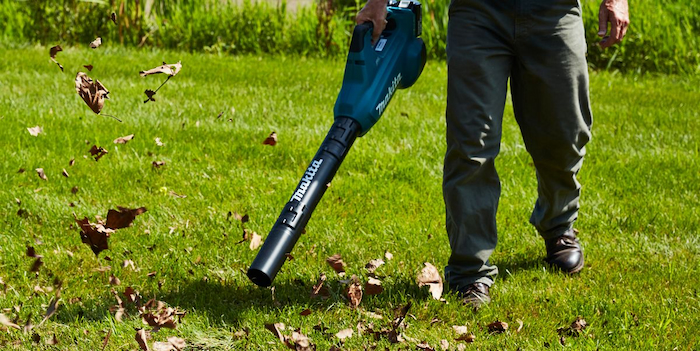
source: popularmechanics.com
This is a common concern for individuals looking to make the switch from corded to cordless or choose one over the other. After all, the whole premise of going with the latter is the convenience and freedom it offers you, but does it come with a compromise in power and airspeed?
The truth is that for both options it really depends on the model you choose. Cordless varieties have advanced over the years to become more powerful and efficient in comparison with corded models, so if you get two machines of the same calibre, chances are that they will perform at a similar level.
Key Factors to Consider
With all that said, getting a suitable cordless blower vacuum for your particular needs will depend on several factors. The way the machine handles the tasks you throw at it will depend greatly on its build quality and some of the fundamental aspects of its design, such as:
Power and Airspeed
Perhaps the leading parameter to consider when selecting a cordless leaf vacuum is the power output (measured in volts) and the airspeed it can achieve. The volt rating of a model indicates the power it can generate and, consequently, how efficiently it can clean up leaves either on flat surfaces or in harder-to-reach areas, like edges and corners.
As for the airspeed, it is generally measured in kilometres per hour (km/h) and indicates the speed of air expelled from the nozzle. This figure is particularly important when it comes to removing wet leaves or heavier debris. The higher the airspeed, the better it will be for these tougher jobs.
Battery Life and Charging Time
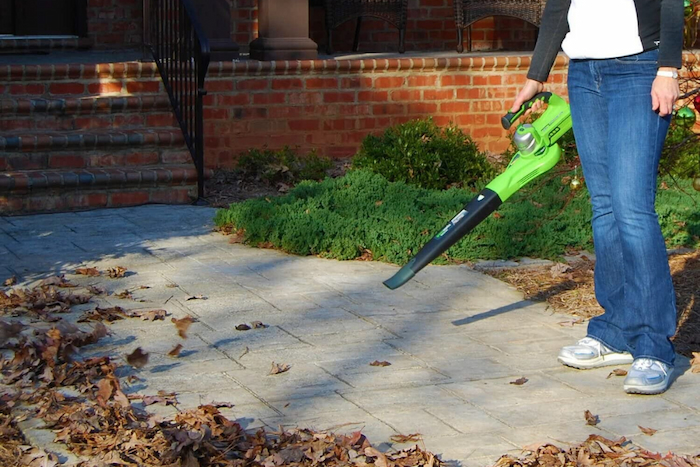
source: bobvila.com
A cordless vacuum is only as useful as its battery life. Most models are sold with a removable battery that must be charged beforehand so you can use the machine for extended periods of time. The amount of charge it can keep and the time required to fully charge the battery should be taken into account when selecting a model.
You could also go for a petrol blower for extra power and longer run times, thanks to the larger fuel tank. This is essentially the same in terms of operation as the battery counterparts, but due to the fuel-engine setup, it’s generally heavier and noisier.
Weight and Ergonomics
Speaking of weight, how much you can comfortably carry and manoeuvre is another crucial factor. The size of a specific machine depends a lot on the engine and battery type. Cordless leaf blowers are usually much lighter than petrol models, but there are still differences in weight between models of the same type.
Ergonomics are equally important, especially if you plan on using the machine for extended periods of time. Try to go for one that has a rubberised or soft grip handle, an adjustable length tube, and an adjustable nozzle with multiple settings. This way you can adapt the machine to your exact needs, making it more comfortable and suitable for different tasks.
Noise Levels
While many of the garden tools used for yard maintenance, such as lawnmowers and hedge cutters, are relatively noisy, this doesn’t have to be the case with your leaf blower as well. Most models are significantly quieter than other machines and some even feature noise reducers or mufflers.
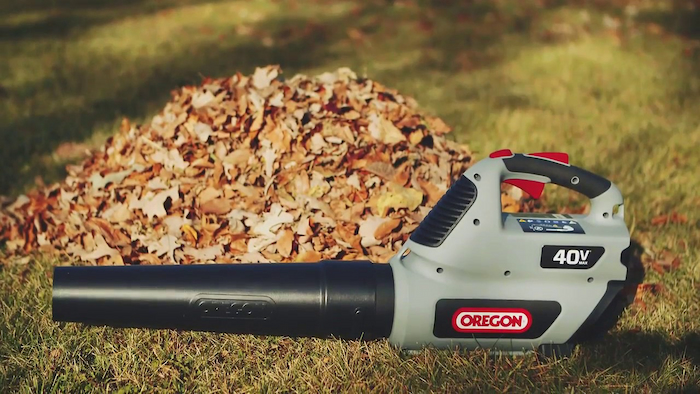
source: oregonproducts.com
But even so, there’s still a slight difference in noise output from model to model. This specification is often listed in decibels (dB) and the lower the dB rating, the quieter it is. Higher numbers don’t necessarily mean it’s a bad product, but if you plan on using it for extended periods of time or in residential areas, be sure to look out for the noise output parameter.
Nozzle Design and Attachments
The design of the nozzle is crucial as it will determine not only how well the machine can perform its job, but also how easy it is to handle. The ideal nozzle should be adjustable (both in height and angle) so you can get into tight spaces and have the airflow directed just where it’s needed.
Some models have additional attachments that allow you to control the airspeed and use it for other tasks other than vacuuming or blowing, such as dusting or inflating. These can be quite useful if you’re looking for a more versatile machine.
Availability of Replacement Parts and Accessories
While we’re often guilty of going for the first model that catches our eye, it’s important to check for the availability of replacement parts and accessories. Not only will this ensure that you have a backup if something breaks, but it will also tell you how popular the model is and if parts are still being made for it.
While it’s not necessary to buy them right away, make sure that an authorised provider has the parts listed in their store. This way you know that if something goes wrong, you’ll be able to fix it quickly and keep your machine in top shape.
A Guide to Choosing an Electric Leaf Blower
With summer reaching its closing stages and autumn lurking around the corner, the annual ritual of cleaning and tidying up your garden is about to begin. As much as the stunning golden hues and cool weather may be enticing, the work that comes with it can often be quite daunting and draining.
Steps to Turning Your Backyard Into a Party-Hosting Space
Having an outdoor space is a terrific asset, whether it’s a small patio or a vast, spacious yard. If you enjoy having a lot of guests and parties over, your garden is a terrific place to host them. Decorating your backyard for summer gatherings has numerous advantages, the most important of which is the lovely end result where you are having the best time with the ones you care about.
A Guide to Lawn Mowers: Find Out the Steps in Choosing the One that Works Best for You
Long are the days when cutting grass and creating your urban garden was time-consuming, required challenging equipment and frequently a lot of patience! Today’s technology offers a wide range of powerful but easy-to-use machines that make mowing the lawn a breeze!
A Step by Step Guide to Outdoor Heaters: Enjoy Your Outdoor Area Year-Round
What if the winter months weren’t just for roasting chestnuts by the fire and staying inside wrapped in blankets? What if you could spend time with your family and get together while enjoying the ice on your patio?
Creative Garden Shed Uses: Simple Steps to Make the Most Out of Your Garden Shed
There are many benefits of having a garden shed in our garden or backyard. They’re the ultimate storage space addition that we usually lack in our home space and the best way to keep our outside area neat and organised. While the most apparent use of a garden shed is providing us with the storage space we need, many other benefits are not so obvious.
Reading about the many ideas of using a garden shed can inspire us to reconsider our garden area and make changes. These changes might be just the right thing to do to make the most out of our garden or yard. Here are some practical steps to achieve the garden look you’ve dreamed of.
1. Choose a Location
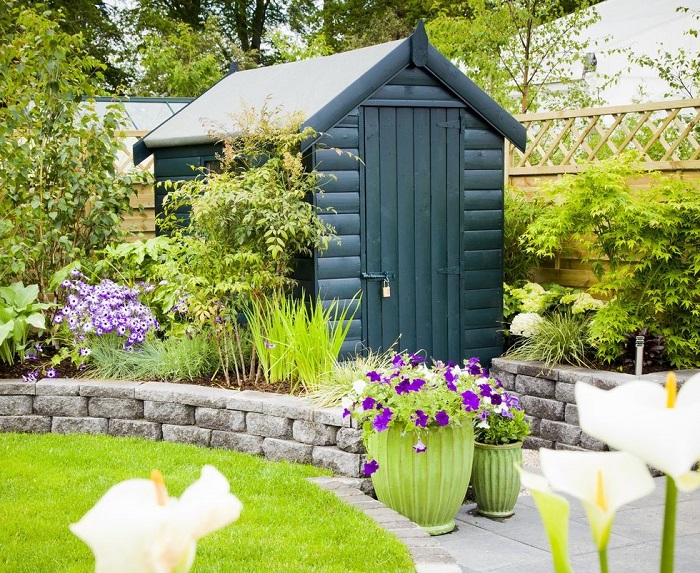
Finding the perfect spot in your garden for building a garden shed is the first step. It will help you determine the size of the shed later on. To do that, have a look at your yard. What is the ideal spot for your shed? Do you want it to stand out as a focal garden point, or do you want it to blend in?
Alignment is another thing you want to consider when finding the perfect place for your garden shed. You need to ask yourself which side you want to have access to. Also, what type of door would be the best for this location? Do you want it to have windows? To make the most out of your shed, you need to have these things in mind.
Before you determine the final location, make sure you can easily access it. Consider building pathways to it if possible or simply narrowing the land around it. You don’t want anything like handling bumps at the end of your project to ruin it for you.
2. Decide on the Size and Material
Garden sheds come in a variety of sizes. The smallest ones come in dimensions of 0.8×0.8m and up, and some of the largest can be wide up to 6m and deep up to 3m. For most homes, a 3m shed is big enough for their storage needs but not too bulky to fit in the yard. That’s why a garden shed 3x3m is the most popular size choice.
When it comes to materials – wood, metal, and plastic are the most commonly used ones. Wood sheds are the sturdiest and bulkiest. Plastic ones are lightweight and easy to move, making them a great choice if you haven’t decided on the final spot yet. Metal garden sheds are something in between and are widely used by many garden owners. They provide the quality and space needed for storage and many other uses of garden sheds.
3. Pick a Creative Use for Your Garden Shed
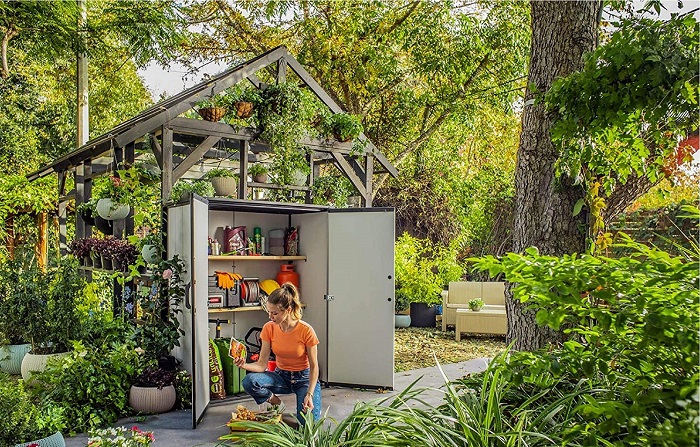
After you decide on the technical things like location, sizes and materials, here comes the most exciting step of the process – picking a theme for your garden shed. You’re probably asking yourself, ‘what can I turn my shed into?’ There are many things sheds can be used for, especially bigger ones, such as a garden shed 3x3m. Here are some of them.
Home Gym
How often have you wished you had a bigger space to work out? Or you wanted to start exercising, but you haven’t found the right spot? By turning your garden shed into a home gym, you’ll have the perfect space for a workout in peace. Just put all the workout equipment there, and you’re ready to go. If you have access to electricity, you can even put a TV in and do your online fitness classes there.
Home Office
Working from home has become the case over the last several years. If you find it hard to concentrate and be productive in your house, you will enjoy the peace that your garden shed can provide. The greenery scene of your garden can be exactly what you need for that little boost of daily creativity.
Workshop
Do you have hobbies or crafts you would use some extra space for? Then turn your garden shed into a workshop. No matter the activity, you can store your supplies in your shed and not worry about putting them off every time you finish or cleaning the mess you make. Having a place you can engage in messy work without taking care of it can add a therapeutical effect to your DIY projects.
She/He Shed
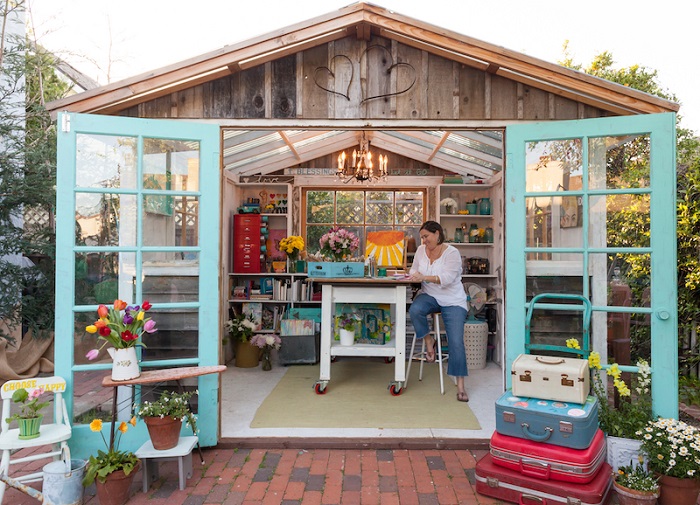
She sheds, and man caves have become very popular in the last couple of years. Turning your shed into one can be very useful and provide you with some free space for a daily hideaway every time you get overwhelmed. Building she (or he) shed should be a process of highest space personalisation. This means looking into your inner self when looking for ways to set a mood and decoration. Ask yourself what calms ad relaxes you and what you see as the best way to take care of yourself when defining the purpose of your she shed. It can be a cozy reading corner, a movie theatre, a pub, or a bar.
Playhouse
Having little children can be exhausting. The lack of sleep you get and the constant worry to keep them safe and alive can make mums tired. And on top of that, cleaning the mess their children make daily. If you feel tired of cleaning the toys and the mess after your kids, how about moving them to a separate play area outside your home? The kids will enjoy having their own space to play, while your house will be less messy.
Garden Room
Building a garden shed is a great way to make your garden a sanctuary. If you need an outdoor space where you can drink a coffee and take a break from gardening, you can turn your shed into a garden room. Consider making it more open if you want to enjoy the garden view and lounge in peace.
Modern Self Watering Planters Guide: Cultivate Some Personality Indoors and Showcase the Beauty of Plants
There’s nothing better than a lovely flower garden to add aesthetic charm and colour to your house. A variety of flowering plants give a wealth of blooms and textures to the area where you live. Although the most popular option for growing flowers is to plant them in regular pots and planters, many people are opting for self-watering planters due to their high levels of convenience.
If in your busy life you have given up on growing your own flowers, veggies, and all sorts of plants, I’m sure you will like the idea of having a self-watering container in your home or trading/office. No more hoses, watering cans or dry, dying plants!
How Self-watering Planters Work?
Self-watering planters come in many different styles, but they all have the same basic design. Each pot has two chambers: a plant pot and a reservoir below it that holds water. The plant pot is suspended above the reservoir, keeping the soil from sitting in water. The plant absorbs water when it needs it, drawing it up from the reservoir through wicking action.
A tube delivers water to the reservoir, either at the bottom or through an overflow hole on the side of the pot. Some pots also have tubes for removing excess water from the reservoir so you can keep them topped up at all times without the worry of overwatering.
The tube that delivers water to the reservoir is usually attached to a pump that keeps it full, but you can also fill some containers with water by hand. Some pots that have tubes that deliver water directly to the soil are called wick planters because they use wicking action to draw moisture up into the soil.
How to Use Self Watering Pots?
Self-watering pots are a great way to start a new hobby or to add some flair to your home. If you are tired of the same old look of your plants, it is time for a change. You can do this by using modern garden planters with innovative design consisting of a large reservoir at the bottom. The pots have holes along the bottom to allow water to flow up into the potting soil, which then helps the plant stay well-hydrated and healthy.
You can find different self-watering pots with different designs, including rectangular ones, octagonal ones, and circular ones. Some self-watering planters are made from clay whereas others from plastic. Make sure you read the labels carefully before purchasing one because you will want to find out what the pot is made from and how big it is.
Tall Pots for Wide Plants
If you want to grow a tall plant in a self-watering pot, you will need a tall one so that there is enough room for your plant’s roots. The holes on these pots also tend to be spaced farther apart so that they can accommodate larger plants as well. Make sure that the pot has drainage holes in case water gets trapped in the reservoir at the bottom of the pot.
Clay vs Plastic Pots
When choosing between plastic and clay modern garden planters, many people choose clay pots because they do not have any chemicals used during manufacturing and these kinds of pots have been used for centuries by farmers and other growers. Clay pots are going to be more expensive than plastic ones, but they are more durable and do not let moisture escape from their surfaces easily. Plastic ones will also be lightweight, shatterproof, inexpensive and resistant to mould. If you like these properties, you should look for injection-moulded HDPE planters that are BPA-free and safe for food.
Self-watering Pots are a Good Bet for Indoor as well as Outdoor Plants
As we know, self-watering pots are great for growing plants indoors. But did you know that they can be used outdoors? They’re perfect for container gardening in the summer, where you can place them on your porch or patio and water whenever you like.
One of the best things about self-watering pots is that they save time and money. You won’t have to worry about forgetting to water your plants or having to lug buckets of water from your sink to your planter every day. Just fill-up the reservoir with water and let it do its job!
These stylish modern garden planters give you a whole new outlook on gardening. While with trees you need to hire specialists to take proper care of them, with self-watering pots you can simply place your plant in the pot and let it go! Plus, with their attractive designs, these pots will enhance any porch, patio, or garden area. You can use self-watering containers for just about any type of plant, from herbs and vegetables to flowering plants!
Planting in a Self-watering Pot
There are many different types of plants, varying in size and shape. Some of them grow fast, like herbs, while others are slow-growing, like cacti. Regardless of what type of plant you choose, you should think about the space your plant will take up once it starts to grow.
That’s why it’s important to pick indoor modern planters that are the right size for your plants; otherwise, you might end up having to repot every few months. When transplanting a plant into a new container, make sure that the drainage holes are not covered by soil and that the container has drainage holes at its bottom. This way, excess water will be able to get out and leave some room for oxygen in the soil.
If you don’t provide this gap in your pot or planter, the roots won’t be able to breathe and the soil will end up getting compacted, hindering water drainage and slowing down root growth. Once you’re done planting your new plant, fill up the tank with water and check regularly to see if it needs more water or if it has leaks that need repairing.
To Sum Up
Not only are self-watering planters an attractive option for a variety of indoor and outdoor uses, but they are also more cost-effective and convenient than regular pots and planters. If you have been unsure of what type of container would be best for your home or office space, consider the self-watering containers. They are convenient, economical, and easy to care for, with low maintenance requirements.
Stylish Outdoor Lighting: Steps to Choosing the Ideal Garden Lights
Steps for Safe and Successful Tree Removal
When you are contemplating handling a yard situation on your own or hiring professionals to do the job you’ll need to estimate the cost and risk of the job. Most homeowners have little to no idea on how to handle a hazardous tree situation and often neglect obvious warning signs that your backyard needs critical handling. Prior to the extraction, proper preparations and removal plans should be made. This implies that successful emergency tree removal requires the skill of professional arborists.
RECENT POSTS


